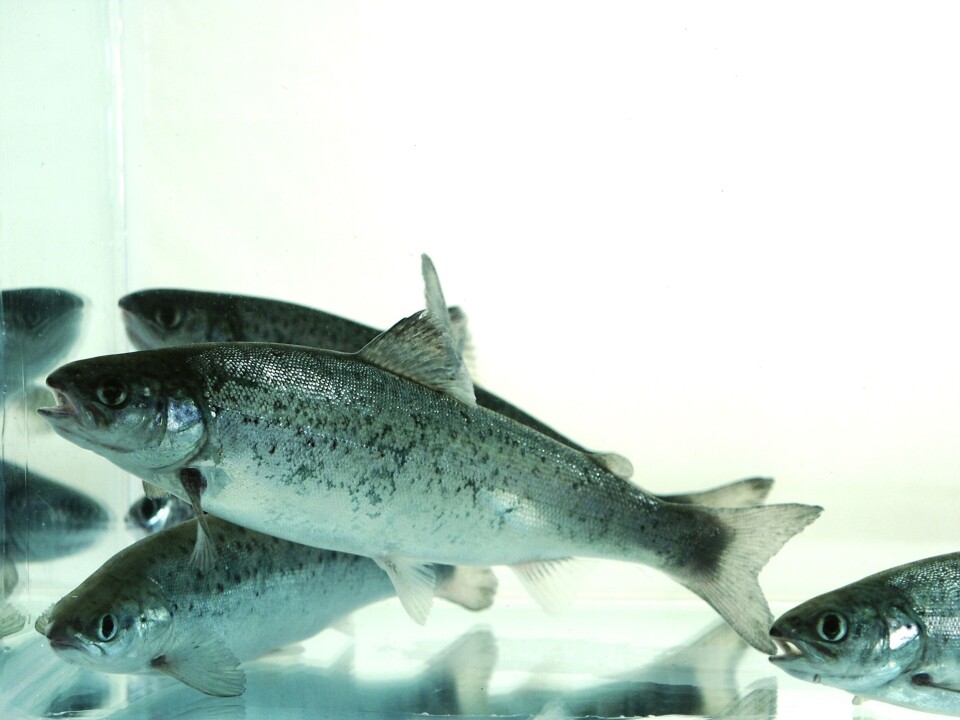
Reduced smolt stockings
Chile: At the end of the third quarter, a change could be observed in the stocking tendency of the three species, decreasing in relation to the same period last year.
Smolt stocking
At the end of the third quarter, there was an average decrease of 7.8 per cent in the stocking of the three species in relation to the same period (January to September) in 2014, reaching a total amount of 172.2 million smolts transferred to the sea. Per species, the numbers show reductions of 1.7 per cent in Atlantic salmon, 24.2 per cent in Rainbow Trout and 7.7 per cent in Coho salmon.
Specifically during September, there was a reduction in the number of smolts transferred to sea sites of about 7 per cent, equivalent to 1.1 million smolts less compared to the same month in 2014.
According to a report submitted by the benchmarking programme of Aquabench, the stocking of Rainbow Trout decreased 22 per cent in September, 1.2 million smolts less were transferred in relation to the same month in 2014. Likewise, the species Coho salmon completed an accumulated smolt transfer of 46.7 million during the season 2015, which represents a reduction of 3.8 million smolts regarding the amount of fish transferred in 2014.
Mortality
The average accumulated mortality decreased for the three species in the group of fish harvested at the end of the third quarter this year (2015). The breakdown shows that the mortality of Atlantic salmon decreased 12 per cent, reaching a total mortality of 13.7 per cent, which corresponds to 7 per cent of dead biomass.
The total mortality of Rainbow Trout decreased 3 per cent, reaching an accumulated amount of 17.2 per cent. The calculation of dead biomass was 11.1 per cent. In the case of Coho salmon, if we compare seasons 2015 and 2014 at the end of Q3, there was a reduction of mortality of 37 per cent, reaching an accumulated percentage of 8.1 per cent, which corresponds to 2.8 per cent of biomass.
Biomass and the number of fish
The analysis shows stabilization of living biomass during the growout stage, with a slight reduction mainly influenced by the evolution of Trout. Atlantic salmon, which represents 74 per cent of the total biomass, shows an increase of 2 per cent at the end of the third quarter this year.
Meanwhile, the number of living fish for the three species totals 254.9 million, which is 5 per cent lower than the number achieved during the same period last year (2014). This negative variation is largely explained by Trout, which reduces the number of living fish by 23 per cent in September 2015 in relation to the same month last year.
Harvest
The total biomass harvested by the whole industry for the three species during the period January-September 2015 reached 550,571 tons (WFE*), which shows a reduction of 5 per cent in relation to the same period in 2014. Making an analysis per species, we can see that the accumulated harvested volumes (WFE) between January and September 2015 reached 424,097 tons for Atlantic salmon, 76,949 tons for Trout and 49,525 tons for Coho salmon. These numbers represent a reduction in harvests during the period equivalent to 2,026 tonnes for Atlantic salmon, 19,341 tonnes for Trout and 4,579 tonnes for Coho salmon.
The harvest weights in September 2015 reached 4.8 kg. in the case of Atlantic salmon, 2.3 kg. for Rainbow Trout and 2.73 kg. for Coho salmon.
Productivity
The productivity of Atlantic salmon until September 2015 reached 4.23 kilos harvested per smolt transferred to the sea, which is 6 per cent higher than the same period in 2014. For the species Rainbow Trout and Coho salmon, an improvement in productivity was also observed (8 per cent and 5 per cent), reaching 2.80 and 2.11 kg harvested/smolt, respectively.






















































